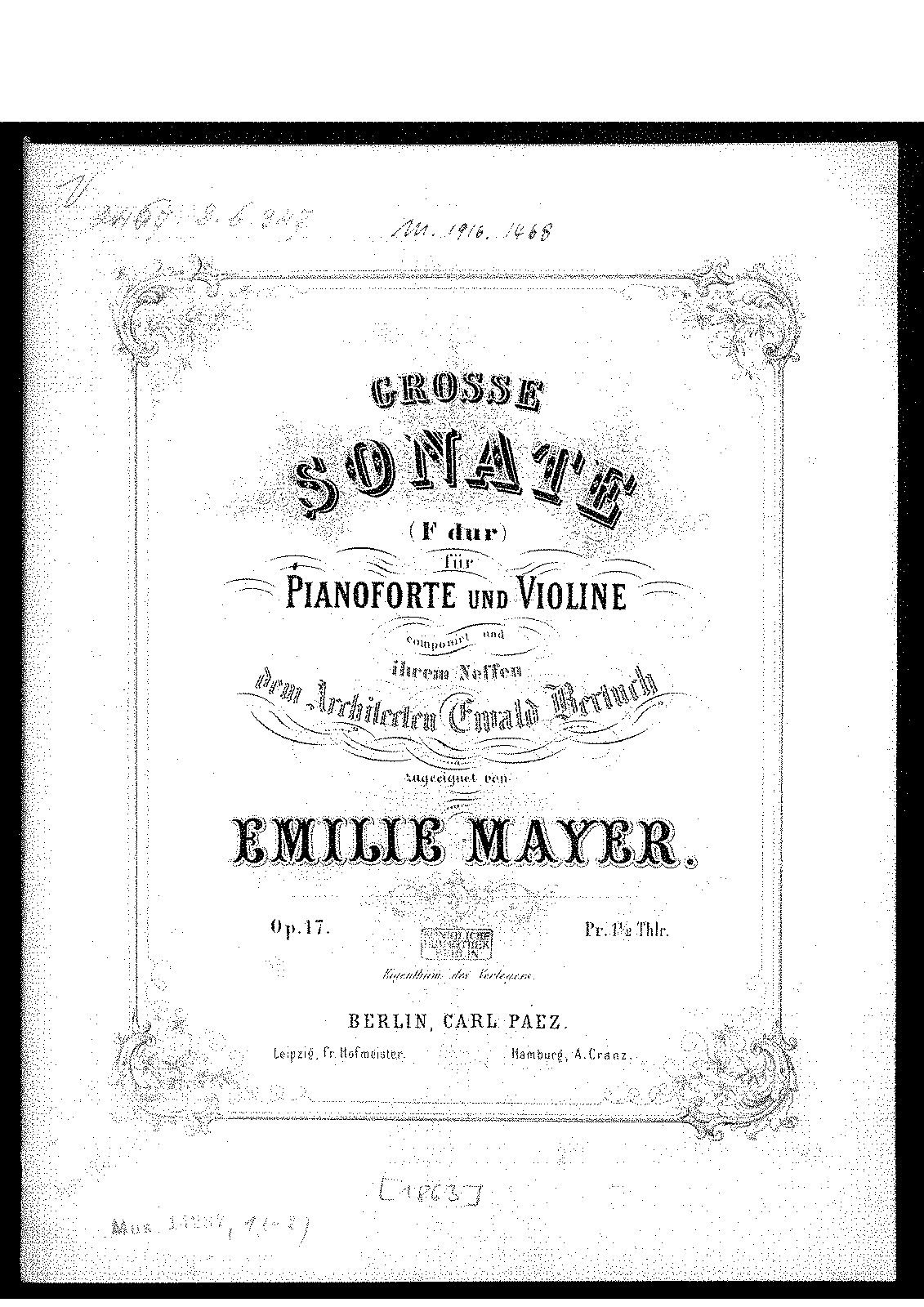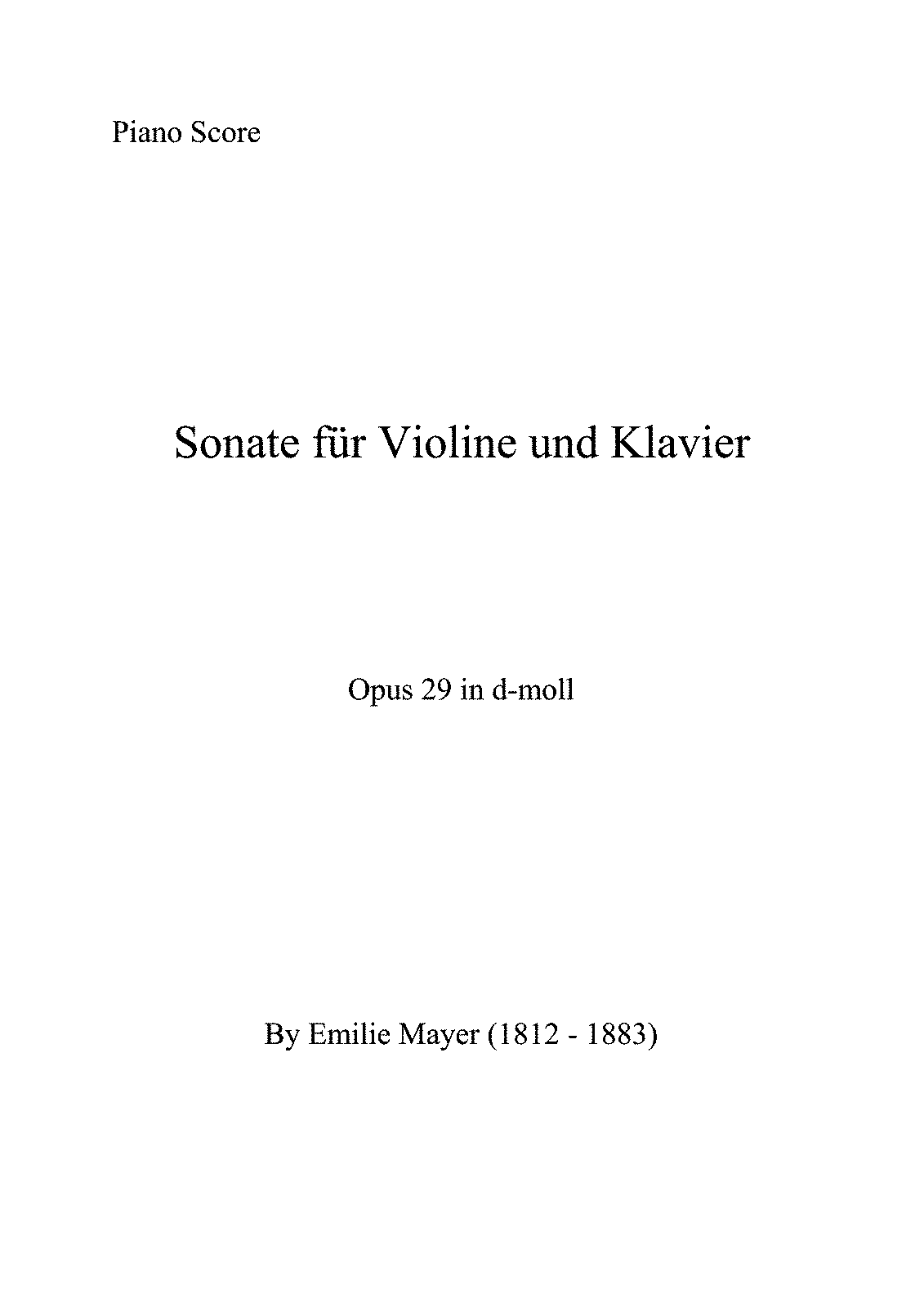
It is not known whether these violin solos were performed during Bach's lifetime or, if they were, who the performer was.
#Which bach sonata largo emilie autumn pro#
The repertoire for solo violin was actively growing at the time: Heinrich Ignaz Franz Biber's celebrated solo passacaglia appeared c.1676 Westhoff's collections of solo violin music were published in 16 Johann Joseph Vilsmayr's Artificiosus Concentus pro Camera in 1715, and Johann Georg Pisendel's solo violin sonata was composed around 1716 and finally, Georg Philipp Telemann published 12 Fantasias for solo violin in 1735. The virtuoso violinist Westhoff served as court musician in Dresden from 1674 to 1697 and in Weimar from 1699 until his death in 1705, so Bach would have known him for two years. The goal of producing a polyphonic texture governed by the rules of counterpoint also indicates the influence of the first surviving works of this kind for solo violin, Westhoff's partitas for solo violin composed in 1696. Nevertheless, composition probably began by 1717, at the onset of Bach's tenure in Köthen. Bach could have begun composition as early as 1703 during his first Weimar years, having met Johann Paul von Westhoff, a violinist and composer who published a number of works for unaccompanied violin. As Christoph Wolff comments, the paucity of sources for instrumental compositions prior to Bach's period in Leipzig makes it difficult to establish a precise chronology nevertheless, a copy made by the Weimar organist Johann Gottfried Walther in 1714 of the Fugue in G minor for violin and continuo, BWV 1026, which has violinistic writing similar to that in BWV 1001–1006, provides support for the commonly held view that the collection could have been reworked from pieces originally composed in Weimar.

The surviving autograph manuscript of the sonatas and partitas was made by Bach in 1720 in Köthen, where he was Kapellmeister. The pieces often served as archetypes for solo violin pieces by later generations of composers, including Eugène Ysaÿe and Béla Bartók. The Sei Solo a Violino senza Basso accompagnato ( Six Solos for Violin Without Bass Accompaniment), as Bach titled them, firmly established the technical capability of the violin as a solo instrument. Today, Bach's Sonatas and Partitas are an essential part of the violin repertoire, and they are frequently performed and recorded. Even after publication, it was largely ignored until the celebrated violinist Joseph Joachim started performing these works.

The set was completed by 1720 but was not published until 1802 by Nikolaus Simrock in Bonn.

The 2nd Partita is widely known for its Chaconne, considered one of the most masterly and expressive works ever written for solo violin. The set consists of three sonatas da chiesa in four movements and three partitas (or partias) in dance-form movements. They are sometimes referred to in English as the sonatas and partias for solo violin in accordance with Bach's headings in the autograph manuscript: "Partia" (plural "Partien") was commonly used in German-speaking regions during Bach's time, whereas the Italian "partita" was introduced to this set in the 1879 Bach Gesellschaft edition, having become standard by that time. The sonatas and partitas for solo violin ( BWV 1001–1006) are a set of six works composed by Johann Sebastian Bach. Title page of the autograph manuscript of BWV 1001–1006, dated 1720


 0 kommentar(er)
0 kommentar(er)
